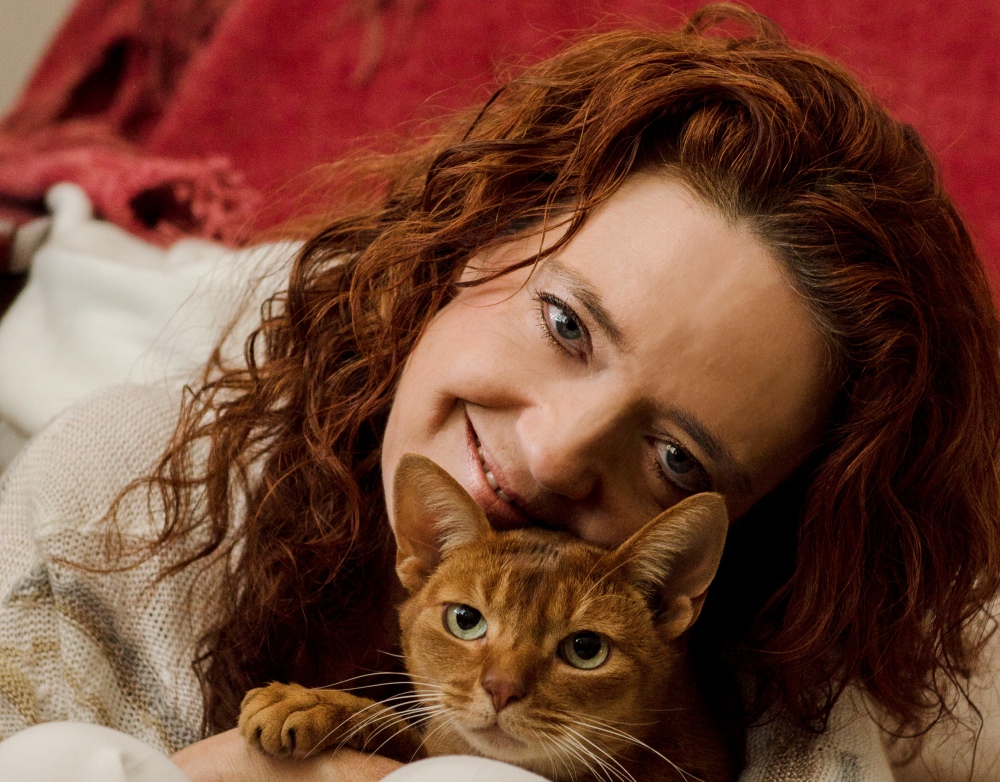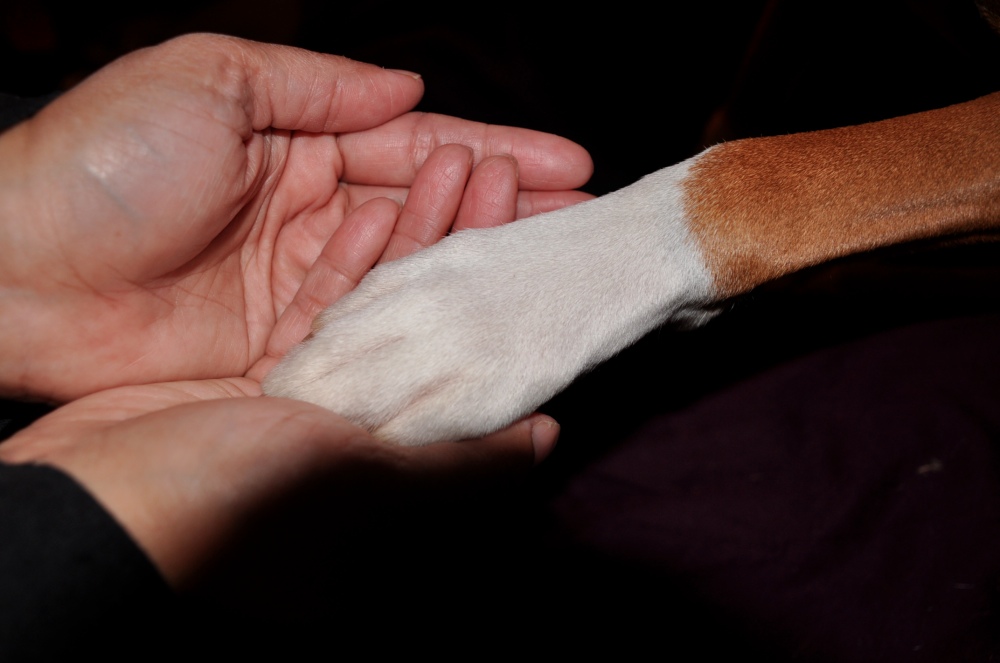Is your pet in pain?

One of the most common concerns and one of the big decisive factors regarding euthanasia is pain. The amount and degree of pain and discomfort is a big factor in the quality of life of a pet and no loving pet owner wants his pet to suffer. However, we can easily be blind to our pet’s suffering. The reason is that pets are experts at hiding their pain for 2 main reasons: Instinctively, they know that, in the wild, if they show any sign of weakness or pain, they will be killed either by a pack leader or by a predator. The other reason is particularly true for dogs since they are pack animals. They consider us part of their pack and they love us. They do not want to weaken us and therefore will do everything they can to hide their pain and weakness in order to protect us.
Very rarely will a pet whimper or cry in pain. When he or she does, the degree of pain is considerable. Therefore, we must be alert to indicators of pain because they can be quite subtle. Many misguided pet owners tell me that they don’t think that their pet is in pain, yet the pet is showing many symptoms that the owners are not aware are pain indicators.
Therefore, I have put together a list of pain indicators that will help you to decide whether or not your pet is in pain. The list must be evaluated as a whole and of course there is a gradient of severity of each symptom. I do hope this will be a helpful guiding tool.
Please note that cats manifest pain in different ways than dogs do. Dogs tend to be restless when in pain. They pant, they pace, they are unsettled... While cats, when in pain, then do be withdrawn, introverted and very still.
-
Droopy head
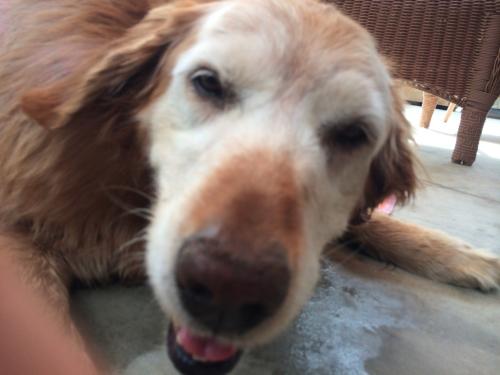
- Droopy ears
- Tucked tail
- Does not want to play
- Lack of social interaction
- Does not enjoy games
- Subtle lack of alertness gradually increasing to a deep apathy (early sign will be subtle)
- Diminished appetite
- Body tension
- Facial tension
- Accepting treats or food gingerly (particularly if pet used to accept them enthusiastically)
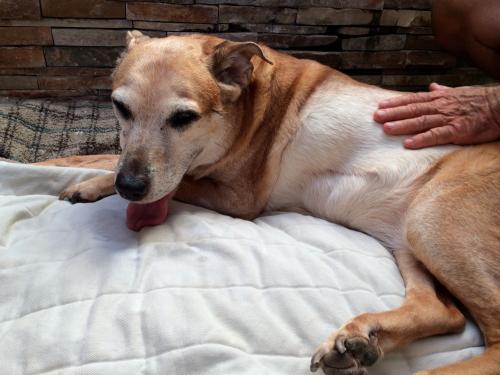
- Lack of interest in walks
- Doesn't respond when called
- Worried or sad facial expression
- Ears pulled back or flattened
- Eyes wide open to expose “white of the eye”
- Avoidance of direct eye contact
- Lips may be retracted, exposing the teeth in a submissive grin (dogs)
- Almond shaped eyes (caused by facial tension)
- Whiskers pulled back against cheeks (caused by facial tension)
- Uncomfortable when resting
- Shifts frequently when resting
- Head held abnormally low

- Difficulty getting up
- Excessive panting (particularly when it is not hot)
- Shivering/trembling/shaking
- Unsettled
- Pacing
- Difficulty moving after a long rest
- Difficulty lying down
- Slow or unusual gait
- Limping
- Hunched back
- Compulsive licking or rubbing of a certain body part
- Looking at sides or other body part suddenly and/or worriedly
- Suddenly running away from “nothing in particular”
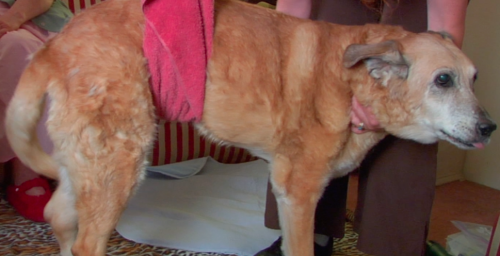
- Can't jump on couch or bed
- Reluctance to lie down
- Sleeps in a position that avoids a certain body part from touching the ground or bed
- Any change in normal sleep patterns
- Purplish tongue color (NOT gums: tongue)
- "Guards" a particular body part
- Reluctance to be touched in a certain area
- Reluctance to be picked up
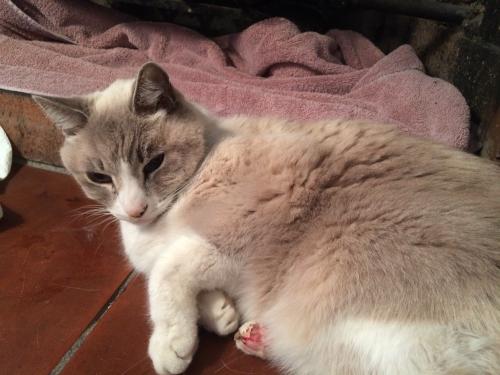
- Lying down at a distance from everybody and somewhat isolated
- Disinterested in surroundings
- Unusual attention seeking
- Flinching when touched in a certain area
- Doesn't rest easily when lying down
- Aggressive behavior to protect a particular area
- Aggressive behavior on a usually docile pet
- Crying when a particular area is touched
- Wakes up at night
- Does not sleep well
- Refusal to go on walks
- Moaning
- Whimpering
- Refusing to eat
- Pressing head against wall (if head pain is present)
- Unable to get up
- Crying in pain
- Teeth clenched, biting down on an object (particularly cats)
- Howling/screaming uncontrollably
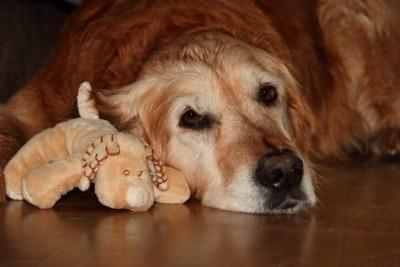
These pain indicators have been placed more or less in a gradually increasing pain order. The severity of the pain is not necessarily exact and proportional to this scale. Some pets will display certain symptoms earlier than others. For example, some pets will lose their appetite sooner than other pets who are more “food motivated”. Some more sensitive breeds (for example like chihuahuas or miniature/teacup poodles) will cry or scream out of fear without a great deal of pain while the more stoic breeds won’t cry unless the pain is unbearable. So, this scale is not necessarily of an unvarying nature, but is true for most pets and knowing this information will raise your awareness on the way pets display pain and may alert you early in the process and may allow you to bring up pain management to your veterinarian earlier rather than later, thereby saving your pet from untold pain in the suset of his or her life.
Please remember that a single yes answer does not mean that your pet’s quality of life is poor. It depends
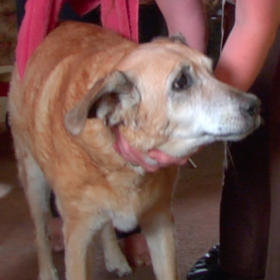
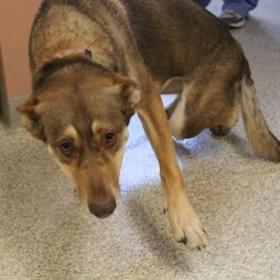
on the degree to which the pet exhibits the symptom and it depends on the symptom. For example, if a pet cries, it is a more severe symptom than if the pet’s head or ears droop. However, subtle symptoms should not be ignored especially if several of those symptoms are present. Do not disregard uncharacteristic behavior on your pet's part. He might be telling you something. It could be pain, illness or something else. It is worth bringing it to your veterinarian's attention.
Pain killers can be quite effective at handling pain and can restore your pet’s quality of life, at least temporarily. If you notice one or more pain indicator listed above in your pet, please discuss this with your primary veterinarian to see if a simple pain killer would be appropriate to try on your pet. Sometimes, the only way to see if a symptom or behavior is pain related

is trying pain killers to see if the symptom or behavior disappears. If it disappears with the use of a simple pain killer, chances that this was a pain indicator. However, there will come a time when even the strongest pain killers will be ineffective and you will have to consider the option of euthanasia.
It is recommended that, when assessing your pet's pain, you rate each indicator above with a score from 0-10 (0 being that the symptom is absent and 10 being maximum manifestation of the symptom).
Please see the "Home tests" page where you will find the list in a table format ready to print and check off each symptom.
Keeping track of these symptoms and how their intensity varies throughout the course of the disease your pet has will help you monitor the progress and the success of any pain management being conducted.
Additional comments on pain

In the section dedicated to pain we discuss manifestations of pain in pets. There are other factors that may not be considered pain per se, but that produce such discomfort that it can be equated to a peculiar kind of pain. Some examples of these factors are pruritus (itching), nausea, anorexia (lack of appetite), lack of oxygen intake, weakness and various disabilities. Each of those factors may not be sufficient ground to consider euthanasia, but pushed to an extreme, they can be.
For example, a pet with chronic allergies who gets no relief from itching no matter what medications are used may be miserable and this may be grounds for considering euthanasia. Also, it may be very expensive and very time consuming to ADEQUATELY care for a pet with a disability or chronic illness. If you are not able to provide that level of care or a level of care sufficient to make the illness tolerable, it may be kinder to opt for euthanasia.
Anorexia and lack of hydration will lead to other pains and discomforts: stomach pain, headaches, dry mouth, sores, disorientation, lightheadedness, weakness, etc...
Constant or frequent intermittent nausea can be considered to be a particular kind of pain.

Lack of adequate oxygenation has also been described as a peculiarly painful sensation by many cancer and cardiac patients in the human medical field and is now acknowledged as a sort of pain.
Therefore, all serious unpleasant sensations have to be taken into consideration when one is evaluating pain in relation to Quality of Life.
I hope that the above has been helpful to you and will help you make the right decision at the right time.
